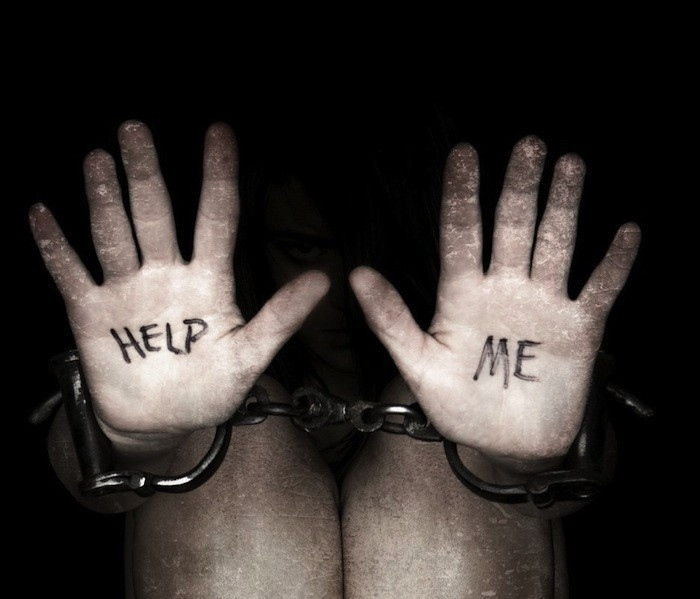Sex Trafficking: Why the Underground Slave Trade Continues to Exploit

Today marks the International Day for the Remembrance of the Slave Trade and its Abolition, the day designated by Unesco to remember the transatlantic slave trade. On this day in 1791, an uprising on the island of Saint-Domingue – modern-day Haiti – set forth a chain of events that would lead to the abolition of slavery. Yet, centuries later, slavery still exists.
Reliable statistics on trafficking are hard to come by. But it is estimated that as many as 21 million men, women and children are trafficked within their own countries and across international borders, to be sold as forced labourers, child soldiers or for forced marriages.
Sex trafficking, or forced prostitution, is becoming increasingly prominent across the world - and the available data likely underestimates the number of women ensnared in sexual exploitation.
Manipulation
Holly Austin Smith, an author from New Jersey who is a survivor of sex trafficking, was groomed by a pimp as a teenager. Her book, Walking Prey: How America's Youth Are Vulnerable to Sex Slavery, was published earlier this year.
"When I was 14, I was lured into running away from home by a man I had met at a shopping mall in Atlantic County, New Jersey, in 1992," Smith told IBTimes UK.
"Many times adults have a difficult time understanding my responses in 1992 but they have to understand that I was just a troubled kid working on 14 years of limited experience with strangers and the rest of the world.
"After exchanging numbers, this man called at night while my unknowing parents watched television in the living room. He got to know me, analysed my troubles and asked me my dreams," Smith explained. He then convinced her to run away from home.
"Within hours, he took me to a motel and left me with a woman," she said. "She dyed my hair, put make-up on my face and dressed me in a red dress. I thought we were going to a club, until the man returned and ordered me to prostitute."

Smith was given condoms by the woman and told to ask for $200 an hour – and to reduce her rate to $100 if necessary. On the first night, she was forced to lose her virginity to an older man – who told her she reminded him of his granddaughter.
"I was never the same after that night," she said.
Smith was rescued by police a day later after they arrested her for prostitution. While she was eventually recognised as a victim, the specialised aftercare needed for a victim of trafficking did not exist. Her pimp served just 365 days in prison.
Smith now speaks to police, health professionals and other advocates about her story and offers advice to survivors.
Underground
For women and girls such as Smith, sex trafficking is dependent on manipulation, extortion and vulnerability. Yet although it exists through underground networks, cases of trafficking are appearing in the public eye more frequently.
In July, the UK government launched the first nationwide campaign aimed at raising awareness of modern slavery. This month, 35 men, women and children from Afghanistan were discovered in a shipping containing at Tilbury Docks in Essex. Likely exploited by traffickers, one man had already died by the time they were rescued.
Andrea Matolcsi, programme officer for trafficking for charity Equality Now, told IBTimes UK there are many different ways to exploit and recruit victims.
"Victims can be recruited by partners and family members, while other victims are promised a way out or better conditions by traffickers if they recruit other individuals, or strangers [sometimes via] agencies – for example, fake job agencies or fake ads on job sites," she explained.
"Physical violence or restraint isn't always necessary - there are also more subtle forms of coercion that keep victims in their situation, including threats to 'out' a woman to her family as having been in prostitution if she doesn't continue, controlling a victim's drug addiction, even threatening to withdraw affection or love can be a form of coercion."
Many victims are pimped by their partners and have no choice but to continue due to economic desperation, Matlosci said.
"If the choice is between going with a trafficker to a brothel and not being able to feed yourself or your children, that is coercion," she added.
Gender Inequality
Women and girls make up around 95% of victims of sexual exploitation and this disproportionate figure is an indicator of why slavery has continued into the modern day.
"It is difficult to give a comprehensive answer as to why slavery has continued over the centuries but one factor that most agree on is that persisting inequalities allow exploitation to continue - between women and men, races and classes, rich and poor, adults and children, the disabled and the able-bodied," Matolcsi said.
"Perpetrators exploit victims because they feel they can because victims are 'lesser' than them," she added. "The specific inequality between women and men also means that it is possible to sexualise and objectify, and thus treat women and girls as objects that can be bought, sold, rented and used."
"In many societies, women and girls will have fewer life options than men and boys - in terms of education and jobs - and be even more vulnerable to trafficking and sexual exploitation."
© Copyright IBTimes 2025. All rights reserved.






















